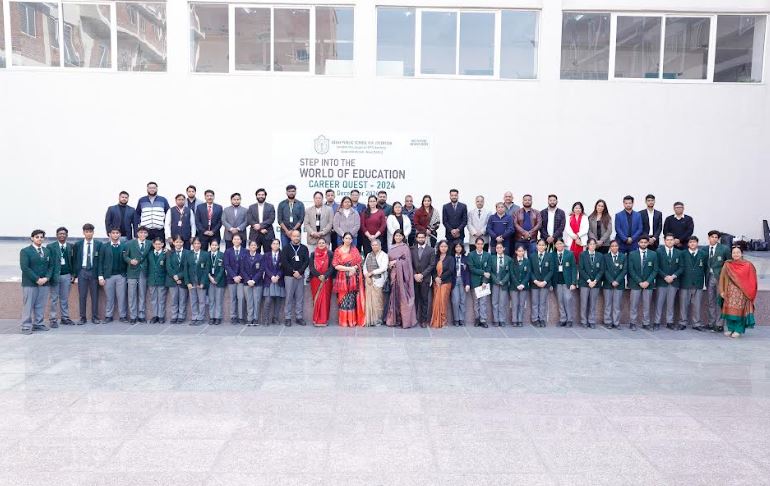By Johan Paulsson, CTO, Axis Communications, Mats Thulin, Director Core Technologies, Axis Communications and Thomas Ekdahl, Engineering Manager, Axis Communications
We’ve once again reached the time of year when we look ahead to some of the technology trends that will affect the security sector over the coming 12 months. The pace of change is as fast as ever.
Some of the trends are evolutions of those we’ve seen in previous years. An obvious one is the continued interest in how AI will be applied in our sector, and we’ve highlighted some of the new considerations that will need to be addressed moving forwards. Others are new, or even a resurgence of topics we may not have focused on for a while.
National and regional legislators will once again try to keep pace with technological innovation. AI, cybersecurity, privacy, the need for resilience in critical entities… All these (and more) will be the focus of proposed and new regulation. We haven’t highlighted this as a specific trend, but it’s no less a priority and something every organisation will need to respond to.
We believe that within all of these trends lies significant opportunity for the sector. For our customers that means enhanced capabilities, more flexibility, greater efficiency and increased value.
Hybrid solutions: the foundation for freedom of choice
In previous years we’ve highlighted how hybrid architectures – those making best use of edge, cloud, and on-premise technologies – have become the de facto choice for security solutions.
The drivers for the choice of architecture will be unique to every organisation, taking into account technological, legal, ethical and governance concerns and requirements. The environment is evolving quickly, and therefore freedom of choice is imperative.
Hybrid solutions give freedom of choice in how to store, view, and analyse video, or manage devices. A combination of edge, cloud, and on-premise technologies can deliver an optimal total system solution, or its flexibility used to choose the specific instance preferred.
Whether demanded by emerging local and regional regulations or concerns over control of data, cost, or energy efficiency, hybrid solutions will continue to offer the greatest flexibility in creating architectures to best suit specific organisational needs and allow a system to be
scaled.
AI evolution alongside AI efficiency
Development within the field of AI continues to race ahead. Deep learning technologies are the bread and butter of most analytics solutions within the security sector, while newer generative AI technologies are rapidly maturing. There is still a lot of hype in certain areas but real applications of generative AI in the security sector are becoming available. Each step of evolution brings with it a new set of opportunities, but also ethical, legal, and corporate considerations.
Generative AI models are large and require much compute capacity to execute, which creates a debate in how to balance the cost of AI (both in terms of financial investment, but also in terms of energy use and environmental impact) with its value. A lot of effort is being put into reducing the size of the models while maintaining the quality of results. The increased use of AI technologies only reinforces hybrid architectures as the standard.
The various ‘flavors’ of AI – from deep learning-based object recognition to generative AI – either demand or benefit from being applied at different places in the value chain, and in specific environments. Generative AI can assist operators in interacting with security solutions in natural language but, for the foreseeable future at least, require significant processing power. Conversely, deep learning-based analytics such as enhanced object recognition can be performed within surveillance cameras themselves.
Eventually this will enable generative models to be, at least partly, run on cameras with high- quality results. At the same time the models are improving in quality with regards to ethical aspects, bias, hallucinations, and the risk of making the wrong decisions.
Over time there is a big opportunity to dramatically change the efficiency and effectiveness of security operations. Algorithms will be able to understand what is happening in a scene and react to anomalies, based on the analysis on different types of input data, including but not limited to visual information. Input data will come from radar, audio, and numerous other sensors. This will create solutions that enable increasingly proactive capabilities and generate valuable insights in security scenarios for long term planning.
Beyond safety and security becomes real
The application of increasingly advanced computer vision, audio, access control and other connected technologies continues to serve security and safety use cases. Greater accuracy of analytics through the application of AI – particularly in object recognition – means that incidents can be responded to more quickly and effectively than ever before.
What is also clear is that the data generated by sensors of all types – video, audio, environmental, and more – can benefit numerous use case beyond the traditional. While still a relatively small part of the market, we expect to see an acceleration of applications aligned to operational efficiency and business intelligence.
This trend highlights the opportunities for increased collaboration across customer
organisations. Technology being sourced or specified for one use case could well be used in another area of a business’s operations. For instance, data being created by video cameras employed principally for security purposes can be analysed over time to improve customer or employee experience, sustainability, or process efficiency.
Through the high-quality hardware platforms available, the pace of development and innovation is astounding. Hardware vendors that foster an open and collaborative ecosystem of application developers and system integrators will bring greatest value to customers most quickly.
The “rebirth” of image quality
It may be counterintuitive to suggest that a focus on image quality is a trend in the sector, where many would assume it’s always been a priority (which, of course, it has). The trend is in how the images from visual sensors are being used, and with that the increased opportunities that better image quality brings.
The paradigm shifts when we consider that images are now often being initially viewed and analysed by computers rather than humans, and that images are being viewed continuously, rather than when an incident of interest has taken place.
Advances in analytics and AI mean that a higher resolution image will inevitably lead to a better result, whatever the use case. Object recognition will be more accurate and more detailed data (and metadata) created. The drive towards even better image quality has been reignited.
With this has come opportunities for efficiency as well as effectiveness. A single camera producing much higher image quality can cover as large an area as multiple cameras would
have been needed for previously. Higher resolution images also support analytics, for instance in large crowds, busy traffic intersections, or fast-moving production lines.
The human is still very much “in the loop”, as the saying goes. Operators will be automatically alerted to scenes they need to pay attention to, increasing efficiency and effectiveness of a response. Image quality as a focus will also place keen attention on the maintenance of surveillance cameras – still often a manual task – as small obstructions can have a significant impact on analysis.
The long-term value in products comes through software support
At the higher end of the security sector, the quality of hardware has been improving year-on- year. Today, hardware devices can be of such high-quality – particularly in terms of performance and capabilities – that expectations about their lifetime are greater than ever.
But while quality hardware can last for many years – as illustrated by the length of warranties – the defining factor in a camera’s functionality, including cybersecurity, and therefore its lifetime value, comes through ongoing software support.
Vendor commitments to support software throughout the expected lifetime of the hardware are essential; software that continues to enhance and build on the capabilities of the camera and keep it as secure as possible.
This also underpins the total cost of ownership of hardware. An investment in better quality camera, with comprehensive software support throughout its lifecycle, will ultimately be a more effective and efficient solution.
Technology autonomy to the customer’s benefit
Our role, and that of our partner ecosystem, is ultimately to focus on meeting the needs of customers. Technology for technology’s sake serves nobody’s purpose – innovations must be aligned to the priorities of the end user.
This clearly means supporting customers’ goals in safety and security, operational efficiency, and business intelligence. But it also means supporting their cybersecurity posture, commitment to sustainability through energy efficient solutions, and flexibility and freedom of choice via open standards-based technologies and platforms.
Technology vendors with more autonomy over their core technologies are clearly best placed to support these customer requirements. Greater control over foundational technology, from the silicon “upwards”, will allow a vendor to design specific capabilities and functionality aligned to customer needs into its products. Such an approach to core technology ownership will also allow a vendor to stand by commitments of being “secure by design”.
Furthermore, greater control of technology – at a component or even material level – is an important prerequisite to more effectively mitigate the risks of broader disruption to global supply chains. This enhances the ability to meet the requirements of customers, when they are needed.
We’re already seeing companies that would have traditionally been seen as software vendors designing their own semiconductors to gain more control over their service delivery – particularly in the area of AI – and we foresee this trend continuing in all sectors. Core technology independence is a trend we’re proud to say we’re some way ahead of, having developed our own system-on-chip, ARTPEC, for the last 25 years.
So, there you have it, our take on some of the trends that will shape the security sector in 2025. We’re sure you’ll have views on these and maybe some other trends of your own. We’d be delighted to continue the discussion on this with you.













 24 December 2024: Delhi Public School, R.N. Extension, proudly hosted CareerQuest 2024 on December 21, 2024, an event that proved to be a pivotal step in empowering students and parents to make well-informed career choices. The event was a vibrant confluence of ideas, guidance, and opportunities, drawing students, parents, and educators from across the region.
24 December 2024: Delhi Public School, R.N. Extension, proudly hosted CareerQuest 2024 on December 21, 2024, an event that proved to be a pivotal step in empowering students and parents to make well-informed career choices. The event was a vibrant confluence of ideas, guidance, and opportunities, drawing students, parents, and educators from across the region.